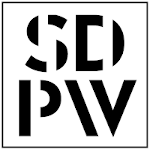Wykaz obszarów badawczych związanych z tagiem Nanoczastki:
| # | Obszar badawczy | Dziedzina naukowa |
|---|---|---|
| 1 |
Synthesis, studies on properties and application of nanoparticles in the construction of biotests and biosensors - the research will involve synthesizing hybrid nanoparticles with the desired magnetic, optical and catalytic properties, which after surface modification with selected receptors (antibodies, oligonuclotides or others) will be used in the development of modern bioanalytical tools for determination of clinically significant disease biomarkers.
|
|
| 2 |
Synthesis and application of nanoparticles in therapies - as part of the research, nanoparticles with the desired optical, magnetic and catalytic properties, which can be used in anti-cancer therapies through the ability to generate heat under the influence of infrared radiation, the applied magnetic field or the ability to catalytically generate reactive oxygen species and other types of toxic radicals, will be synthesized. The nanoparticles will be modified with receptors / ligands that recognize proteins characteristic for cancer cells.
|
|
| 3 |
- Bioavailability investigation of selected nanoparticles (NPs)
- Investigation of nanoparticles (NPs) metabolism in edible plants
- New extraction methods of nanoparticles from plant tissue and food - ionic liquids, NADES
|
|
| 4 |
The main areas of scientific of prof. Paweł Sobieszuk include chemical engineering and bioprocess engineering. His research works are tackling the problems concerning nanohydroxyapatite synthesis and characterization for application in bone regeneration therapy. Especially important is designing the method of obtaining composites of polymer and nanohydroxyapatite in such a way that the mechanical properties of polymer allow for it to be used in 3D printing while preserving the osteoinductive properties of hydroxyapatite. Because of these two properties, it is possible to use such composites in the 3D printing of osteoinductive implants of bones. His other study area focuses on gas-liquid systems, including nanobubble technology, properties, and application. Nanobubbles are a novel nanomaterial composed of gas spheres in liquid with or without a surfactant shell surrounding the gas. Such objects are used in multiple areas of both industry and medicine. Prof. Sobieszuk particularly finds it interesting to study the effect of gas nanobubbles on living matter, bacteria, microscopic fungi, and animal cells.
|
|
| 5 |
The use of electrospun materials in the construction of modern bioanalytical tools - Electrospinning is a modern technique for producing polymeric mats (both from natural and synthetic polymers) with an expanded surface area and high porosity. The method also makes it possible to produce composite structures enriched with nanoparticles, which boosts their range of applications by giving them new properties. Such mats can be utilized in bulk technologies (catalytic processes or wastewater treatment) or for more sophisticated biomedical or bioanalytical applications. Their numerous unique features also allow their use in the construction of biosensors and biotesters as transducer modifiers, as well as layers in/on which the most important receptors, from the point of view of these bioanalytical devices, are immobilized.
|
|
| 6 |
The research focuses on the processes of separating solid and liquid particles from gases, with particular emphasis on aerosol filtration in fibrous structures. The studies include the influence of the structure and properties of filtration materials, as well as the morphology of particles, on filtration efficiency and dynamics, including localized phenomena occurring at the interface between particles and fibers. Mathematical models and advanced experimental techniques are being developed to support the design of filters produced by various methods, such as melt-blown and solution blow spinning. These filters are characterized by high efficiency, low flow resistance, and long service life. The materials find applications in environmental protection, industry, and medicine. The research is conducted as part of scientific projects in collaboration with domestic and international scientific centers and industry partners.
|
